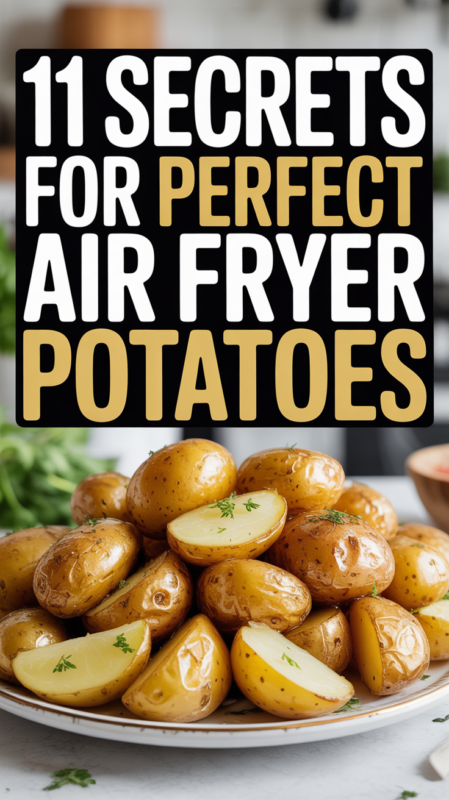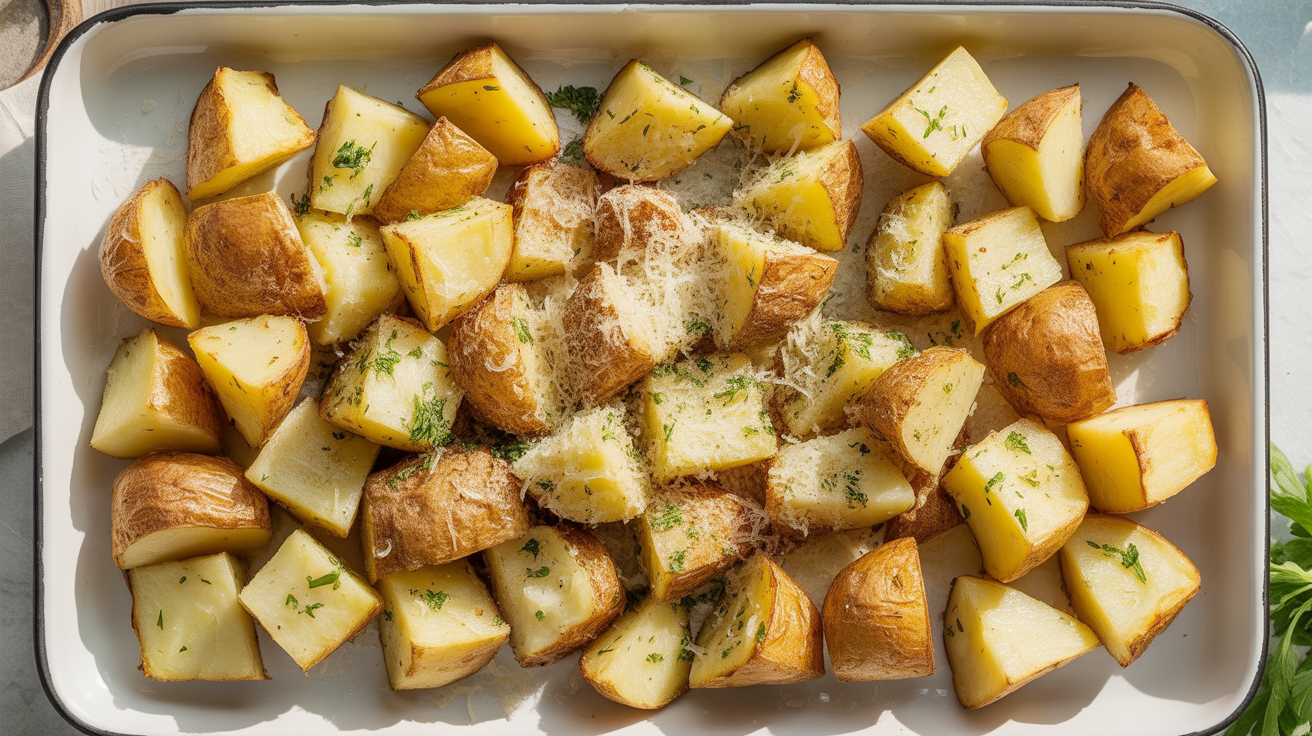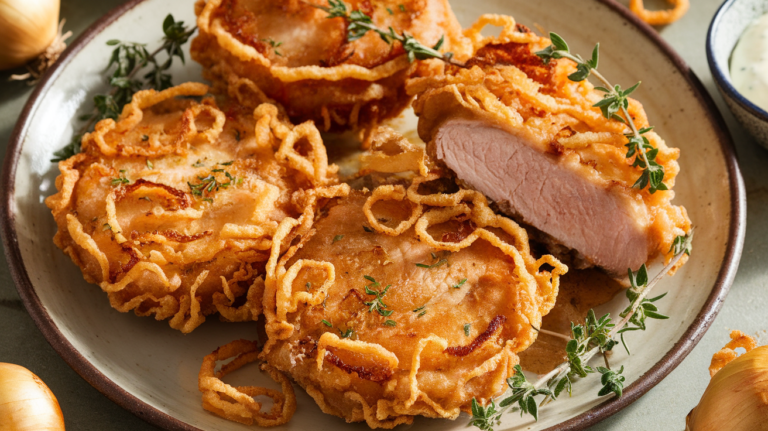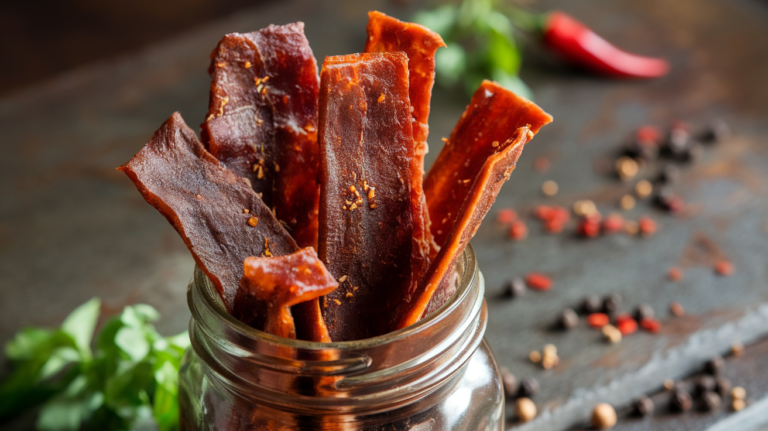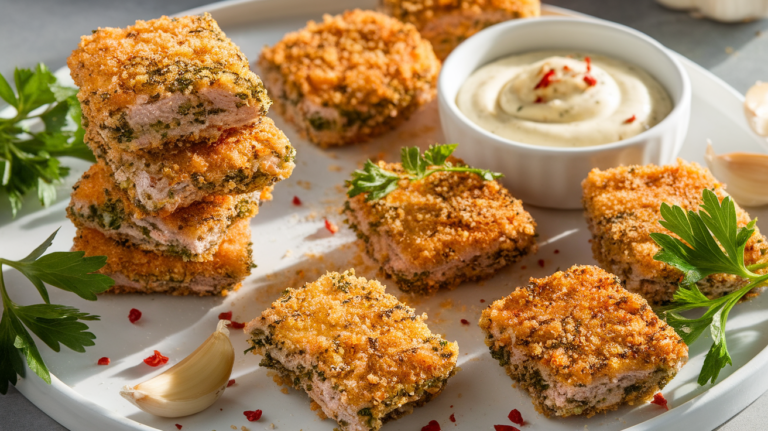Air Fryer Potatoes: 11 Game-Changing Secrets for Perfect Crispy Results
The heartbreak of cutting into a potato that looks golden and crispy on the outside only to find it raw and hard in the middle is a special kind of kitchen disappointment. After investing time and effort into what should be a simple side dish, ending up with half-cooked potatoes feels like a complete failure.
The potato struggle is real and universal. They come out either burnt on the outside and raw inside, or soggy and limp without any of that coveted crispiness. Getting both perfectly crispy exteriors and fluffy, tender interiors seems to require deep fryers full of oil or professional kitchen equipment.
The truth is that air fryer potatoes can absolutely achieve restaurant-quality results without gallons of oil or specialized training. This isn’t about complicated techniques or fancy ingredients. It’s about understanding how potatoes respond to dry heat and making strategic decisions about variety selection, preparation, seasoning, and timing.
These eleven game-changing secrets unlock the potential hiding in those potatoes sitting in the pantry, transforming a basic staple into a side dish that disappears from plates faster than it can be made.
1. Potato Variety Selection Changes Everything
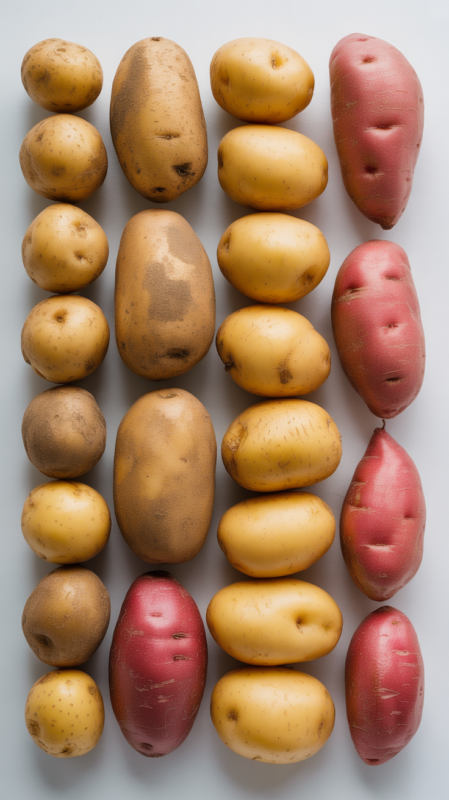
Not all potatoes behave the same way in the air fryer, and choosing the right variety determines success before cooking even begins. The starch content directly impacts texture and crispiness potential.
Russet potatoes deliver the fluffiest interiors and crispiest exteriors. Their high starch content creates that perfect contrast between crunchy outside and pillowy inside. For air fryer baked potatoes or potato wedges, russets reign supreme. They’re the workhorse variety that handles high heat beautifully.
Yukon gold potatoes offer a buttery flavor and creamy texture that makes them ideal for roasted potatoes air fryer preparations. Their medium starch content means they hold their shape well while still developing crispy edges. For air fryer yukon gold potatoes or cubed preparations, these golden beauties excel.
Red potatoes and new potatoes work beautifully for small potatoes in air fryer recipes. Their waxy texture means they stay firm and hold together perfectly when halved or quartered. The thin skins become extra crispy and are completely edible, adding textural interest.
Sweet potatoes air fryer variations require slightly different timing but work wonderfully. Their natural sugars caramelize beautifully, creating sweet crispy edges that pair well with both savory and sweet seasonings.
For air fryer french fries or air fryer homemade french fries, stick with russets. Their high starch content creates the classic fry texture everyone expects. Waxy potatoes make disappointing fries that never quite crisp properly.
Size consistency matters as much as variety. Choose potatoes of similar size for even cooking. A bag with tiny potatoes mixed with enormous ones creates timing nightmares where some burn while others stay raw.
2. The Soaking Secret Nobody Talks About
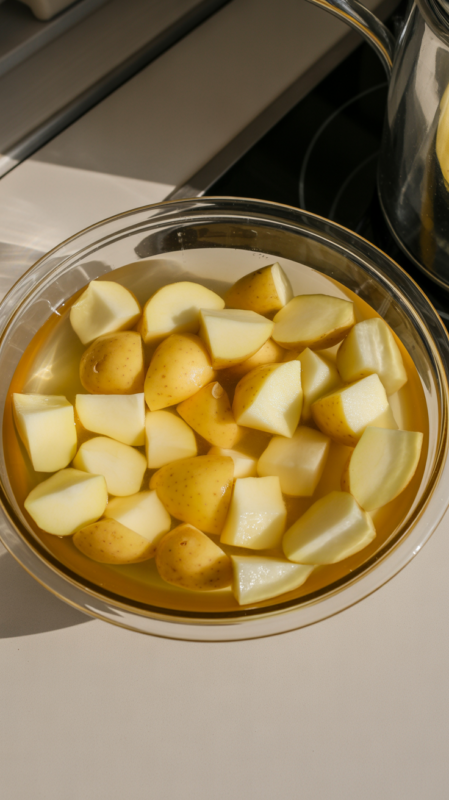
Soaking cut potatoes in cold water removes excess surface starch, which is the key to achieving maximum crispiness. This step makes the difference between good and exceptional crispy air fryer potatoes.
After cutting potatoes into desired shapes, submerge them completely in cold water for at least 30 minutes. An hour is even better for maximum starch removal. The water turns cloudy as starch leaches out—that’s exactly what needs to happen.
Change the water once during soaking if it becomes very cloudy. Fresh water continues pulling out starch more effectively than water already saturated with potato starch.
For air fryer potatoes fries or thin cuts, soaking becomes even more critical. The increased surface area means more starch exposure, which means more potential sogginess without proper removal. Never skip soaking for fry-cut potatoes.
Some cooks add a tablespoon of white vinegar to the soaking water. The acid helps potatoes maintain structure during cooking and promotes even crisping. It’s not mandatory but makes a noticeable difference in final texture.
After soaking, drain potatoes thoroughly in a colander. Shake vigorously to remove excess water. The drying step that follows is crucial, but proper draining starts the moisture removal process.
For meal prep efficiency, soak and dry potatoes the night before. Store dried, cut potatoes in an airtight container in the refrigerator. They’ll be ready to season and cook in minutes, making weeknight dinners effortless.
3. Dry Them Like Your Life Depends On It
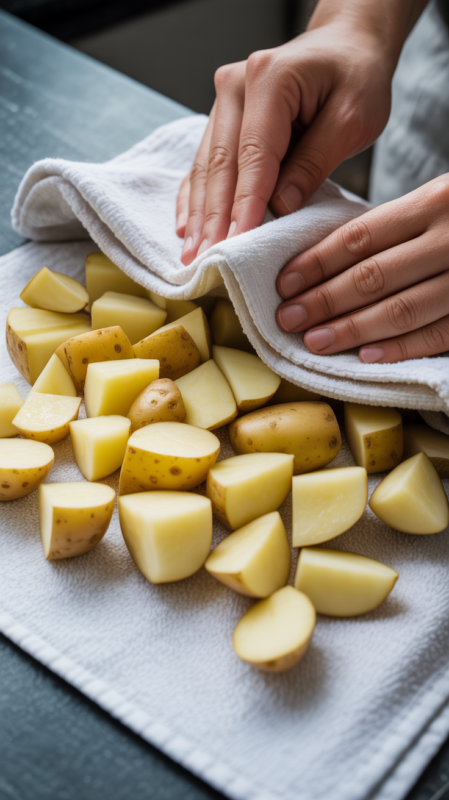
Moisture is the enemy of crispy potatoes. Water on the surface creates steam during cooking, which prevents the Maillard reaction that produces golden, crispy exteriors.
After draining soaked potatoes, spread them on clean kitchen towels in a single layer. Pat the tops dry with another towel, pressing firmly to absorb surface moisture. Let them air dry for 10-15 minutes for maximum moisture removal.
A salad spinner works remarkably well for this task. Spin potatoes multiple times, dumping collected water between spins. The centrifugal force pulls water out of cut surfaces better than hand drying alone.
Paper towels work but aren’t as effective as cloth towels. They tend to stick to wet potato surfaces and leave behind paper bits. If using paper towels, choose high-quality ones that don’t disintegrate when wet.
For air fryer potato cubes or smaller cuts, drying becomes even more important. The increased surface area holds more water, which means more potential for sogginess. Take extra time to ensure every surface is completely dry.
Some dedicated cooks use a hair dryer on cool setting to speed the drying process. It sounds excessive but works remarkably well for impatient chefs. The moving air evaporates surface moisture in minutes rather than 15 minutes of passive air drying.
The potatoes should feel completely dry to the touch before adding oil. If they feel damp or cold, give them more drying time. Rushing this step guarantees mediocre results regardless of perfect execution everywhere else.
4. Oil Application Strategy for Maximum Crispiness
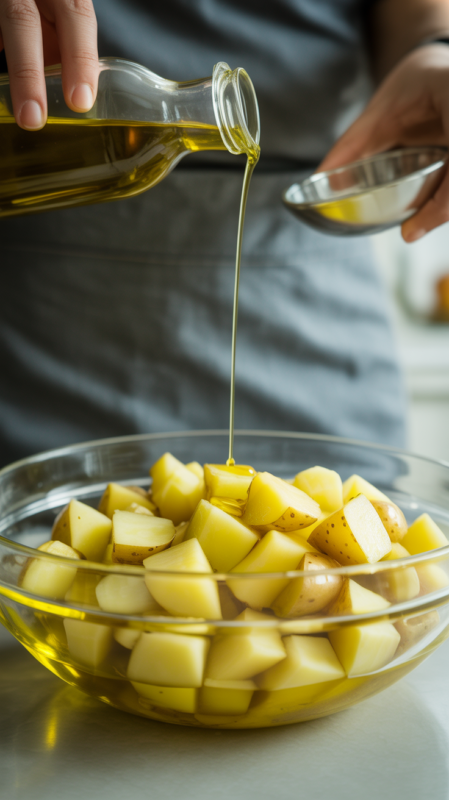
The type of oil and application method directly impact final texture and flavor. Simply dumping potatoes in a bowl with oil doesn’t create the even coating needed for consistent crisping.
Olive oil offers excellent flavor and performs well at air fryer temperatures. It promotes browning and adds a subtle fruity note that complements potato earthiness. Use about one tablespoon per pound of potatoes for the right balance.
Avocado oil is ideal for higher temperature cooking with its 500°F smoke point. It creates exceptionally crispy results with neutral flavor that lets seasonings shine. For maximum crispiness, avocado oil is the professional choice.
The application technique matters as much as oil selection. Place dry potatoes in a large bowl and drizzle oil in a thin stream while tossing continuously. This distributes oil evenly so every piece gets coated without any swimming in excess.
An oil mister or spray bottle provides even more control and uses less oil overall. A light mist over arranged potatoes ensures coverage without overdoing it. This tool pays for itself in improved results and reduced oil consumption.
For air fryer roasted potatoes or whole small potatoes, toss them with oil until every surface glistens but no puddles remain. Too much oil makes potatoes greasy rather than crispy. Too little leaves dry spots that don’t brown properly.
Coating potatoes with cornstarch or potato starch after oiling creates an extra crispy exterior. Use about one tablespoon per pound of potatoes. The starch absorbs residual moisture and creates a shell that crisps beautifully. This restaurant trick works wonders at home.
5. Seasoning Layers Build Complex Flavor
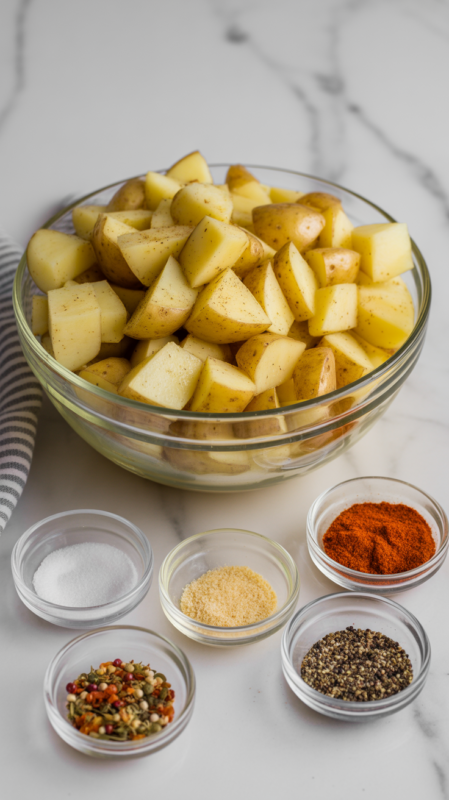
Dumping all seasonings on at once and hoping for best is amateur hour. Strategic layering builds depth and ensures every bite delivers maximum flavor impact.
Start with kosher salt immediately after oil application. The coarse crystals stick to oiled surfaces and season potatoes throughout cooking. Use more salt than seems reasonable—potatoes need generous seasoning to avoid blandness.
Garlic powder, onion powder, and black pepper form the flavor foundation. Add them after salt and toss again to distribute evenly. These aromatics infuse into potato surfaces during cooking, creating savory depth.
Italian seasoning brings herbs into the mix for air fryer roast potatoes with Mediterranean flair. Dried rosemary, thyme, and oregano complement potato earthiness beautifully. About one teaspoon per pound creates noticeable herb presence without overwhelming.
Paprika adds color and subtle sweetness. Smoked paprika brings campfire notes that make potatoes taste like they came off a grill. Regular paprika provides color without changing flavor significantly.
For air fryer russet potatoes prepared as baked potatoes, keep seasoning simple—just salt and pepper on the skin. The fluffy interior gets dressed after cooking with butter, sour cream, cheese, and other toppings.
Fresh herbs added after cooking provide bright finishing notes. Chopped parsley, chives, or rosemary sprinkled over hot potatoes add color and fresh flavor that dried herbs can’t match. The residual heat releases aromatic oils without wilting herbs completely.
6. Size and Shape Consistency Prevents Disasters
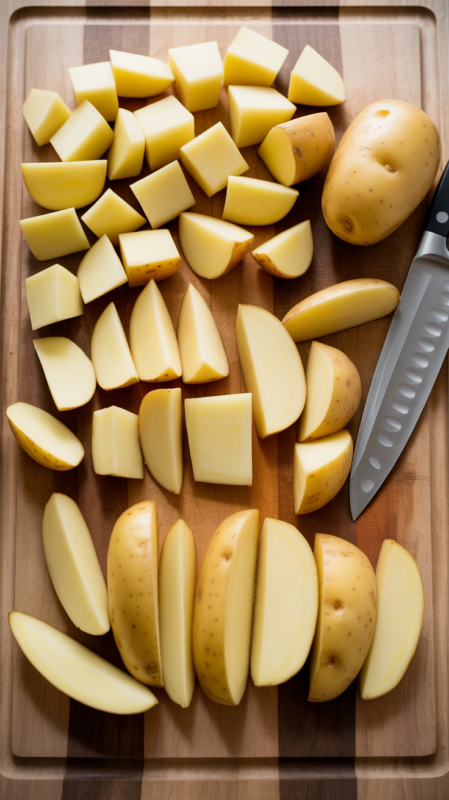
Uneven cutting creates uneven cooking, which means some pieces burn while others stay raw. Taking time to cut uniformly pays massive dividends in consistent results.
For air fryer potato cubes, aim for three-quarter inch pieces. This size cooks through in 15-18 minutes while developing crispy exteriors. Larger cubes take too long and smaller ones burn before interiors cook.
Wedges should be roughly equal thickness—about half an inch at the thickest part. Cut potatoes in half lengthwise, then cut each half into three or four wedges depending on potato size. Consistency matters more than exact measurements.
For air fryer potatoes fries, use a mandoline or fry cutter for uniform thickness. Hand cutting rarely produces consistent results. Quarter-inch thick fries cook evenly and develop maximum crispiness. Thicker cuts stay soft inside while thinner ones burn.
Halved small potatoes work beautifully when cut straight through the middle. This creates two flat surfaces that contact the basket and develop crispy brown crusts. Quartering works for slightly larger potatoes.
For air fryer baked potatoes, choose medium russets of similar size—about 8 ounces each. Massive baking potatoes take too long and small ones finish too quickly. Uniformity ensures everything comes out perfectly at the same time.
Sort through cut potatoes and group similar sizes together. Cook larger pieces separately from smaller ones if necessary. The quality improvement from size-appropriate cooking times justifies the extra few minutes.
7. Temperature and Timing for Different Cuts
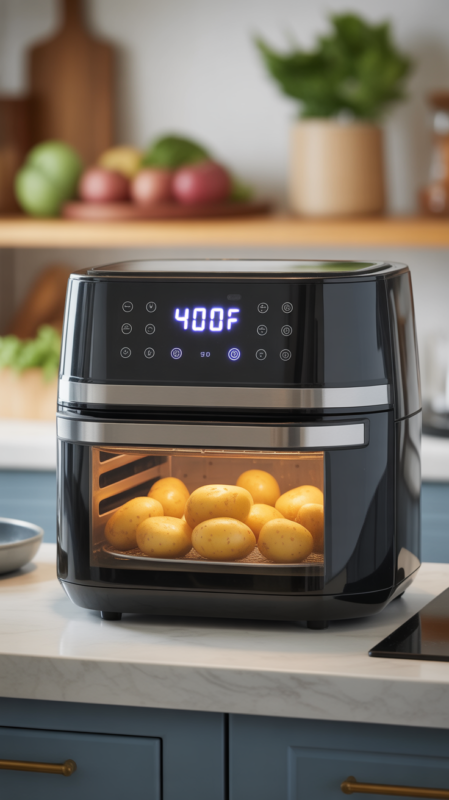
Different potato cuts require different temperatures and times for optimal results. Understanding these variations prevents the frustration of undercooked or burnt potatoes.
For cubed potatoes or roasted potato chunks, cook at 400°F for 15-20 minutes, shaking every 5-7 minutes. The moderate temperature allows interiors to cook through while exteriors crisp without burning.
Air fryer french fries need higher heat—425°F for 15-18 minutes with shaking halfway through. The increased temperature creates crispier exteriors and golden color that matches expectations for fries.
Wedges perform best at 380°F for 18-22 minutes. The thicker cut needs slightly lower temperature to prevent exterior burning before interiors cook. Flip wedges halfway through for even browning on both cut surfaces.
Whole small potatoes or halved new potatoes cook at 400°F for 20-25 minutes. Their larger mass requires more time, but the intact or minimally cut structure means less surface area for moisture loss and more forgiving timing.
For air fryer baked potatoes, cook at 400°F for 35-40 minutes for medium russets. Pierce potatoes several times with a fork before cooking to allow steam to escape. No oil is necessary—just rub skins with salt for crispy exterior.
Visual cues matter more than arbitrary times. Potatoes should be golden brown with crispy edges when done. Insert a fork or knife—it should slide through easily with no resistance. These indicators are more reliable than time alone.
8. The Critical Shaking and Flipping Protocol
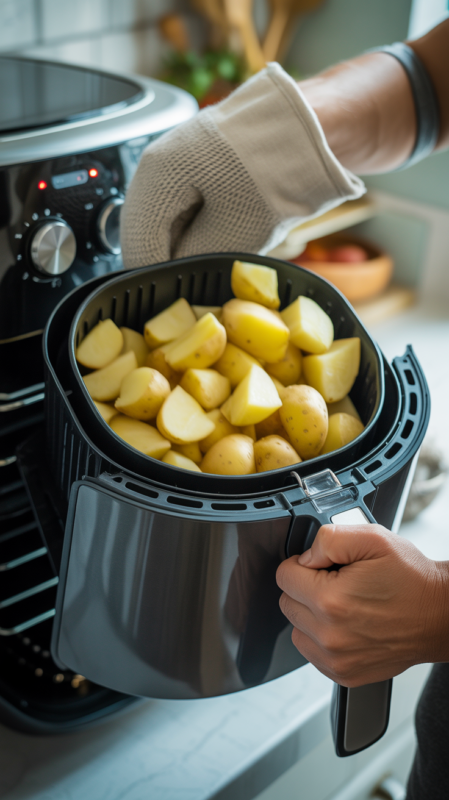
Leaving potatoes untouched during cooking creates uneven browning with some pieces burnt and others pale. Strategic shaking and flipping ensures consistent crisping on all surfaces.
Set timers for shake intervals rather than relying on memory. For most preparations, shake every 5-7 minutes. This frequency redistributes potatoes enough for even cooking without excessive basket opening that releases heat.
Use oven mitts and shake the basket vigorously multiple times. The goal is flipping and redistributing so different surfaces contact the hot basket. Gentle shaking doesn’t accomplish this—be aggressive.
For wedges or larger pieces, use tongs or a spatula to flip each piece individually. Shaking doesn’t flip these adequately. Taking the time to flip ensures both cut surfaces develop crispy brown crusts.
If adding cheese or other toppings, do it during the final two minutes after the last shake. This prevents burning while still allowing flavors to meld and cheese to melt properly.
Some air fryer models have automatic rotating baskets. These help but don’t eliminate the need for manual shaking. The rotation prevents bottom-layer burning but doesn’t flip pieces to expose all surfaces equally.
Check progress during shakes but avoid excessive basket opening. Each opening releases heat and extends cooking time. Three to four checks during cooking is sufficient for most preparations.
9. Don’t Overcrowd (Even When Feeding a Crowd)
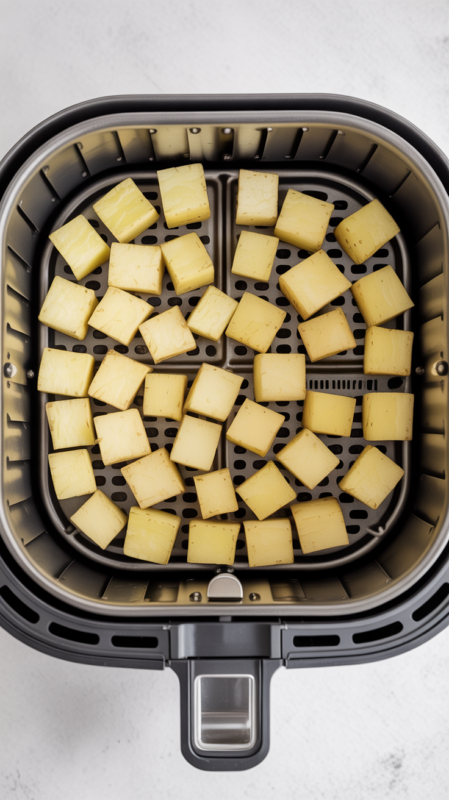
Piling potatoes high in the air fryer basket creates steamed potatoes instead of crispy ones. Air circulation around each piece is essential for proper crisping and even cooking.
Arrange potatoes in a single layer with minimal overlap. Some touching is inevitable and acceptable, but avoid stacking in multiple layers. Most standard air fryers hold one to one and a half pounds of cut potatoes in a proper single layer.
For larger quantities, cook in batches rather than overcrowding. The second batch takes the same 15-20 minutes as the first. The quality difference between properly cooked batches and overcrowded disappointment makes the time investment worthwhile.
Keep finished batches warm in a 200°F oven while subsequent batches cook. They maintain texture surprisingly well and everything stays hot for serving. Add a sprinkle of fresh salt when bringing them to the table.
For meal prep cooking several pounds at once, the batch method works best. Prepare and season all potatoes, then cook in proper batches. Store in airtight containers for reheating throughout the week.
Basket size determines capacity. A 3.5-quart basket handles one pound comfortably. Larger 5-6 quart models can manage 1.5 pounds. Smaller 2-quart versions might only accommodate half a pound without overcrowding. Know the limits and work within them.
10. Finishing Touches That Elevate Good to Great
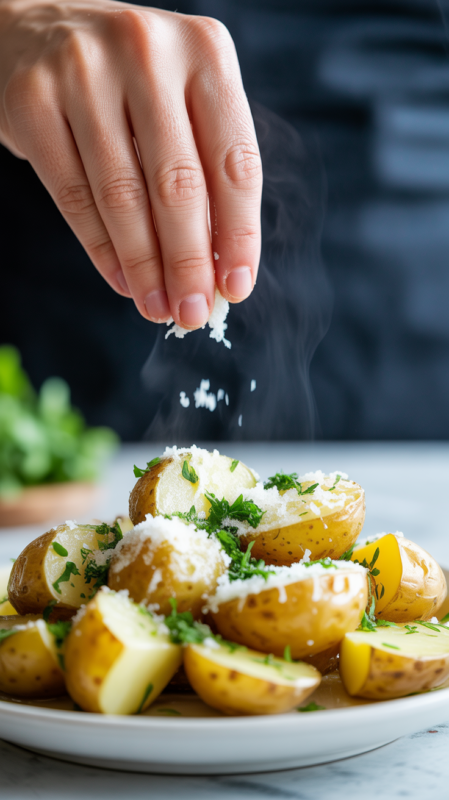
Air fryer potatoes taste good straight from the basket, but strategic finishing touches transform them into restaurant-quality sides. These final additions create complexity and polish that rival high-end preparations.
Flaky sea salt sprinkled over hot potatoes immediately after cooking provides textural contrast and flavor bursts. The large crystals don’t dissolve immediately, creating little pockets of intense saltiness that make taste buds pay attention.
Fresh herbs bring brightness and color. Chopped parsley, rosemary, or thyme scattered over finished potatoes add visual appeal and fresh flavor that dried herbs can’t match. Toss gently to distribute.
Grated parmesan cheese melts beautifully on hot potatoes. Add it immediately after cooking so residual heat melts the cheese slightly without burning. The salty, umami-rich flavor complements potato earthiness perfectly.
For loaded potato variations, top finished potatoes with crispy bacon bits, sour cream, shredded cheddar cheese, and chopped green onions. This transforms simple air fryer roasted potatoes into complete side dishes or even main courses.
Truffle oil drizzled sparingly over finished potatoes creates restaurant luxury. A little goes a long way—too much overwhelms with perfume-like intensity. A light drizzle adds sophisticated earthiness that impresses guests.
Lemon zest provides unexpected brightness. Grate fresh lemon zest over hot potatoes for citrus notes that cut through richness. This works especially well with herb-seasoned preparations, creating Mediterranean-inspired sides.
11. Storage, Reheating, and Meal Prep Strategies
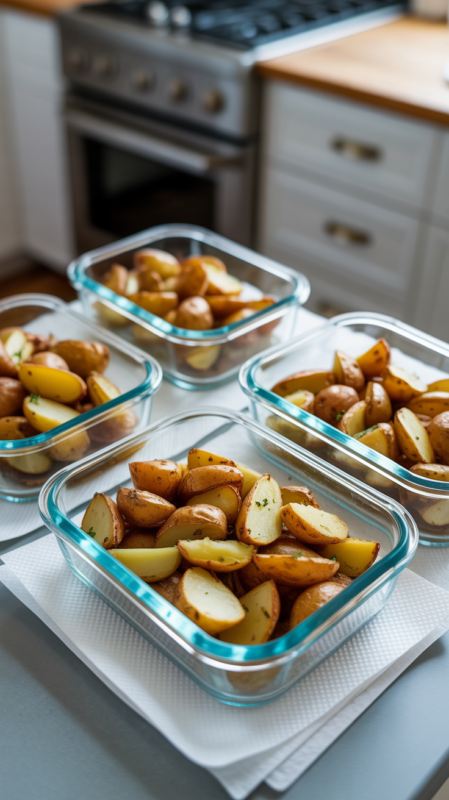
Properly stored air fryer potatoes maintain quality for three to four days in the refrigerator. This makes batch cooking practical for week-long meal prep situations.
Cool cooked potatoes completely before storing. Placing warm potatoes in containers creates condensation that turns crispy exteriors soggy overnight. Spread them on a baking sheet for 15-20 minutes to release heat before storage.
Store in airtight containers with paper towels on the bottom to absorb residual moisture. Layer potatoes between paper towels if stacking is necessary. This keeps them drier and helps maintain texture better.
Reheat in the air fryer at 350°F for 4-5 minutes to resurrect crispiness. This method is infinitely superior to microwaving, which turns potatoes rubbery and sad. The dry heat re-crisps exteriors while warming interiors.
Add a tiny spray of cooking oil before reheating to refresh the coating. This minimal added fat helps crisp the surface during reheating without making potatoes greasy.
For meal prep efficiency, portion potatoes into individual containers with proteins and other vegetables. Having complete meals ready to reheat makes weeknight dinners effortless and prevents takeout temptation.
Freezing cooked potatoes doesn’t work well. They turn mushy and lose texture during thawing. Stick with refrigeration for up to four days rather than attempting to freeze finished potatoes. Raw cut potatoes freeze beautifully though—prep and freeze for future convenience.
The Simple Truth About Potato Perfection
Mastering air fryer potatoes isn’t about complicated culinary techniques or expensive equipment. It’s about understanding how potatoes respond to dry heat and making strategic decisions about variety selection, moisture removal, oil application, seasoning, and timing.
This versatile side dish solves multiple kitchen challenges simultaneously. It’s fast enough for weeknight dinners, healthy enough with minimal oil to feel good about eating regularly, and delicious enough that people actually request it specifically. The hands-off cooking method means attention can focus elsewhere while the air fryer works its magic.
The adaptability keeps this recipe in constant rotation. Monday might feature classic roasted potato chunks with Italian seasoning. Wednesday could bring crispy air fryer french fries. Friday might showcase loaded potato wedges with all the fixings. Same basic method, endless variations.
These eleven secrets work together to eliminate the guesswork and frustration that usually accompanies potato cooking. No more raw centers with burnt exteriors. No more soggy disappointments. No more wondering why restaurant potatoes taste better despite using similar ingredients.
The next time a side dish needs to happen quickly without sacrificing quality, these crispy air fryer potatoes deliver. Those potatoes in the pantry are all that stands between right now and restaurant-quality results that make everyone ask for seconds.
The ingredients are simple, the technique is straightforward, and the results speak loudly enough to convert even the pickiest eaters at the dinner table. Time to prove that air fryer potatoes can rival any traditional preparation method while using a fraction of the oil and effort.
